#duke of rutland
Explore tagged Tumblr posts
Text
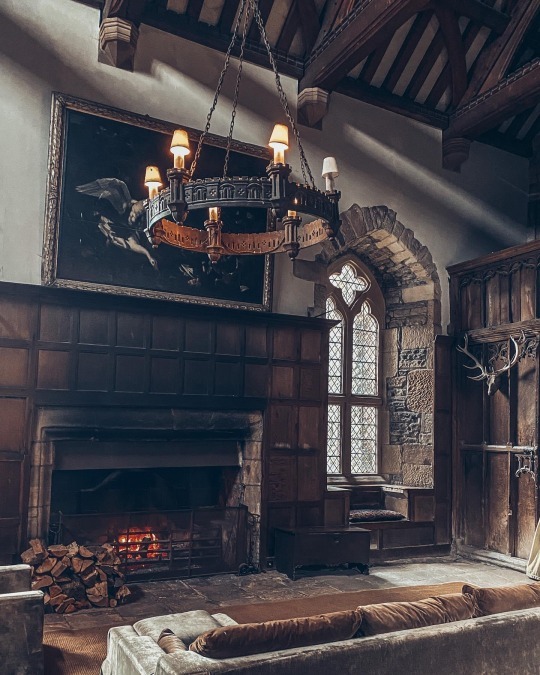
A welcoming fire amidst the Tudor grandeur of Haddon Hall
#Haddon Hall#Bakewell#Derbyshire#fireplace#Tudor style#Duke of Rutland#English mansions#oak panelling#nobility
244 notes
·
View notes
Photo
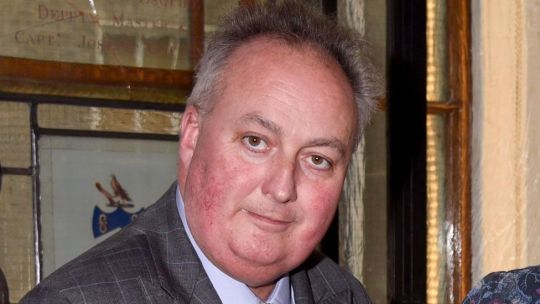

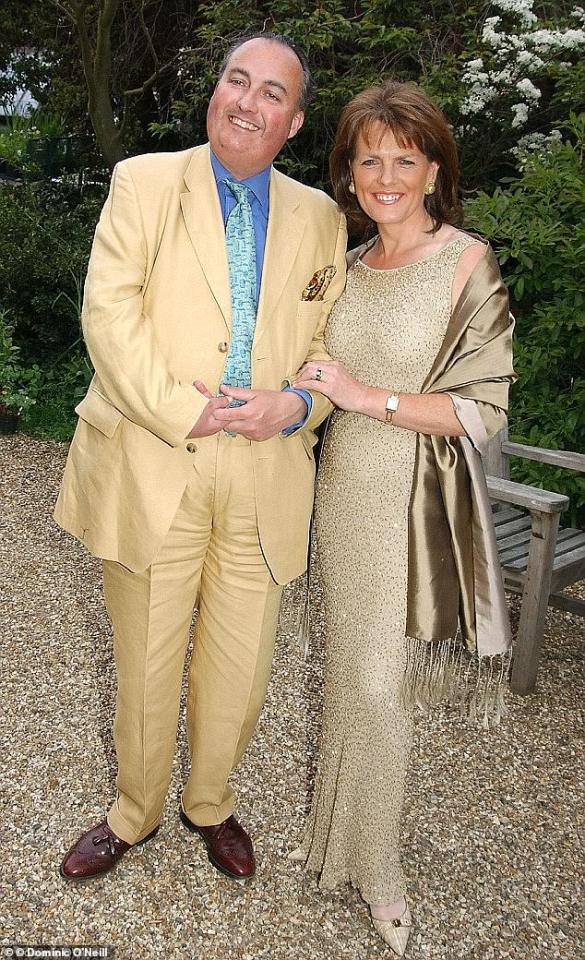
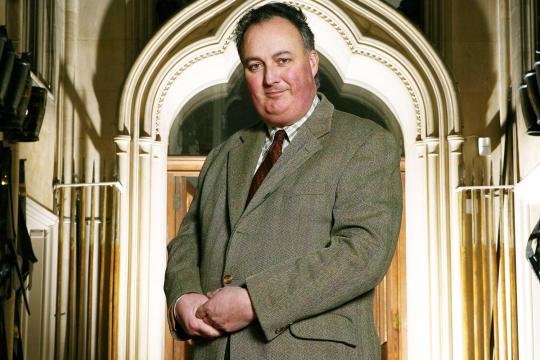
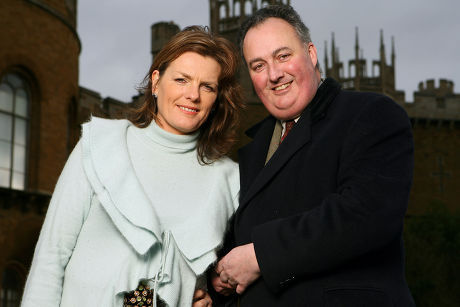

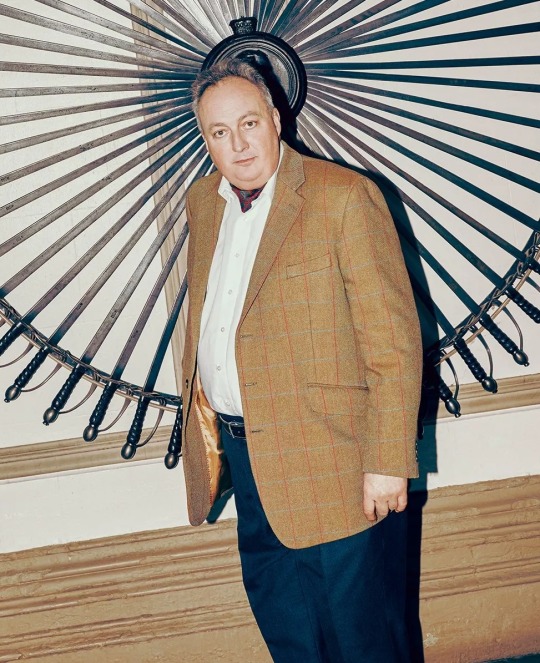
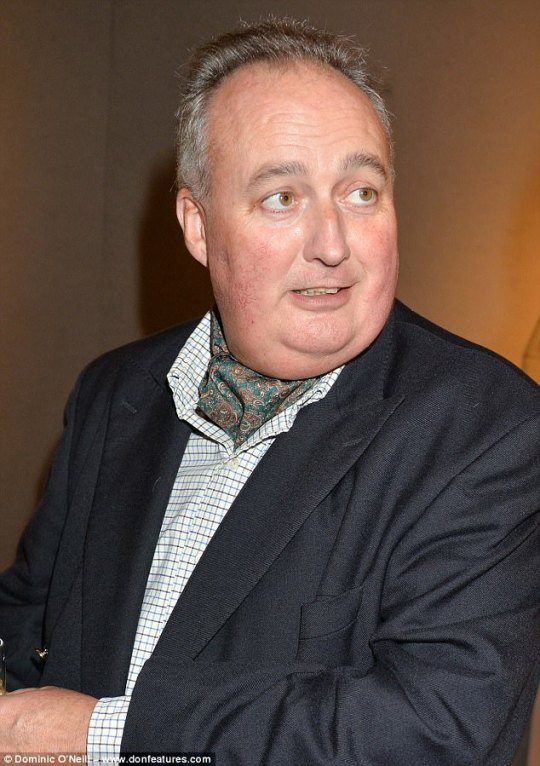

David Manners, 11th Duke of Rutland Born: May 8, 1959, England Physique: Husky Build
David Charles Robert Manners, 11th Duke of Rutland, is a British hereditary peer and landowner. Rutland is the elder son of Charles Manners, the 10th Duke of Rutland. He succeeded his father in the titles on 4 January 1999. The Duke was a high-profile supporter of the UK Independence Party (UKIP) and has hosted fundraising events at Belvoir Castle.
Judging a book by its cover, he seems like the type who fucks a lot and will cheat as soon as he's not getting enough sex. Wait... so he's separated in 2012 from his wife with whom he had five children. Called it. And they've been living together ever since his affair with separate partners.
33 notes
·
View notes
Text
I am reading a book about Richard Duke of York and the author claims that the Duke could not afford to send his sons to other nobles' houses for education and March and Rutland were bullied by their headmaster's children...
#edward iv#edmund earl of rutland#richard iii#richard duke of york#english history#medieval era#wars of the roses
2 notes
·
View notes
Text
Belvoir Castle overlooking the yellow fields of Leicestershire, England

0 notes
Text
Belvoir Castle overlooking the yellow fields of Leicestershire, England

0 notes
Text
Belvoir Castle overlooking the yellow fields of Leicestershire, England
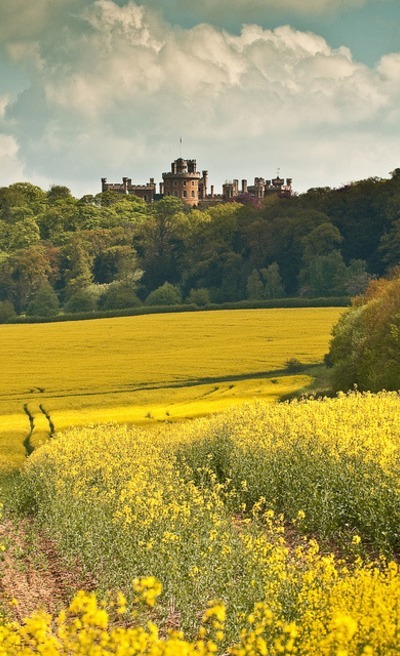
0 notes
Text

Haddon Hall near Bakewell, Derbyshire, UK. It is the former seat of the Dukes of Rutland.
cr: Hans uit Heudsen
#derbyshire#english countryside#english country houses#manor house#stately home#british countryside#countryside#country living#roses#summer aesthetic#e
1K notes
·
View notes
Text




















Character Bios:
Baudouin I, The Duke of Rutland
Crown Princess Elizabeth of Wessex
Louisa, The Dowager Duchess of Rutland
Previous | Next | Beginning of Current Chapter
#sims 4 royal simblr#sims 4 royal family#sims royal legacy#sims 4 royalty#sims 4 storytelling#sims royal family#sims 4 royals#wessexroyals#wessexsuccession#elizabeth#william
9 notes
·
View notes
Text

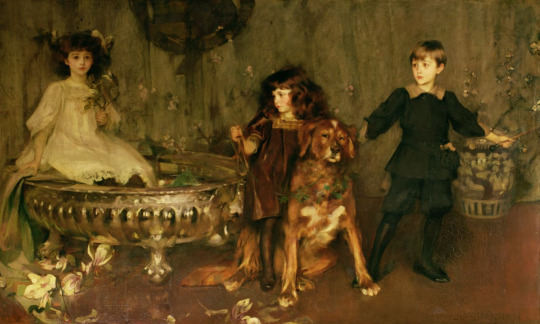
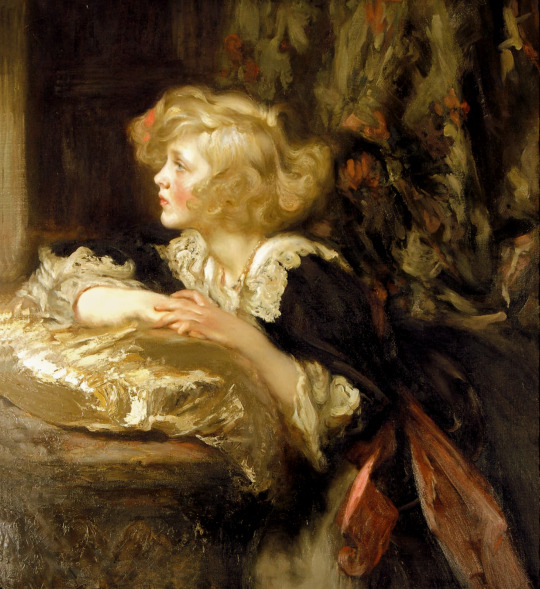
James Jebusa Shannon: portraits of Violet Manners, Duchess of Rutland, and four of her children: Lady Marjorie Manners (later Paget, Marchioness of Anglesey); Lord John Manners (later 9th Duke of Rutland); Robert Manners, Lord Haddon; and Lady Diana Manners (later Cooper, Viscountess Norwich); 1895, 1900.
#james jebusa shannon#art#1895#1900#1890s#1900s#violet rutland#marjorie anglesey#john rutland#robert manners#diana cooper#wish there was one of letty to complete the set!#🕰️
75 notes
·
View notes
Text
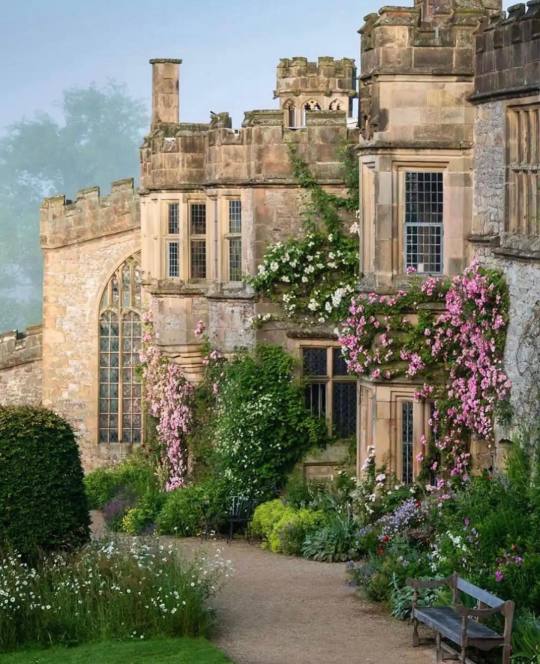
Haddon Hall, an English country house nestled in the Peak District National Park, Derbyshire… considered to be one of the finest examples of a fortified medieval manor house in existence with history dating back to the 12th century… It is described as “the most romantic house to survive from the Middle Ages” in Simon Jenkins’ book, “A Thousand Best Houses,” and currently is a seat of the Duke of Rutland.
13 notes
·
View notes
Text
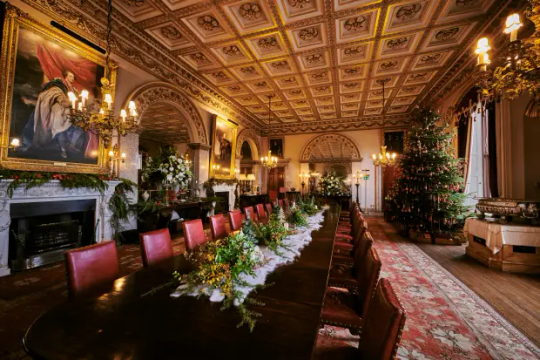
Belvoir Castle's State Dining Room has hosted Queen Victoria & King Edward VIII. It is also where afternoon tea was first invented in 1840.
#Belvoir Castle#Leicestershire#English mansion#Dining Room#Duke & Duchess of Rutland#baroque#country estate#UK#afternoon tea#classic architecture#interior design#royalty
109 notes
·
View notes
Text




Tish Weinstock wedding is still one of my favorites of all times. The theme was "Halloween wedding," and her groom, Tom Guinness, had in store a three-day bacchanal staged over the halloween weekend at Belvoir Castle, the 11th-Century ancestral home of the Duke of Rutland.
Tish wore it 3 vintage dresses. For the ceremony she wore Jane Bourvis’s Notting Hill studio, the dress was crafted from exquisite antique lace, with a 30s style veil inspired on Jean Paul Gaultier. The final touch was a Miu miu ballet flats.
The second dress was a John Galliano’s autumn/winter 2009 for drinks after the ceremony. This was a ready-to-wear collection. The final gowns for the show were made in the Paris ateliers, and the beadwork was done by Lesage.

The third dress was for the after-party dinner in the castle basement. A beaded, bias-cut gown by Galliano for Dior.

A plus: Before the celebration, the couple organized a pub quiz hosted by Jack Guinness, Tish, and Tom dressed up like Romeo and Juliet. the Dior dress served as a perfect Juliet costume for the bride.
Also, on the last day, the guests decamped to Frog Hollow, a picturesque picnic spot on the Belvoir estate, for a boozy recovery brunch. Tish wore an upcycled piano shawl dress by Conner Ives.
#doomedtodestruction#aesthetic#girl blog#fashion#dark femininity#dark aesthetic#girl blogger#dark feminine energy#wedding#bridal#vogue magazine#tish weinstock#tom guinness
7 notes
·
View notes
Text
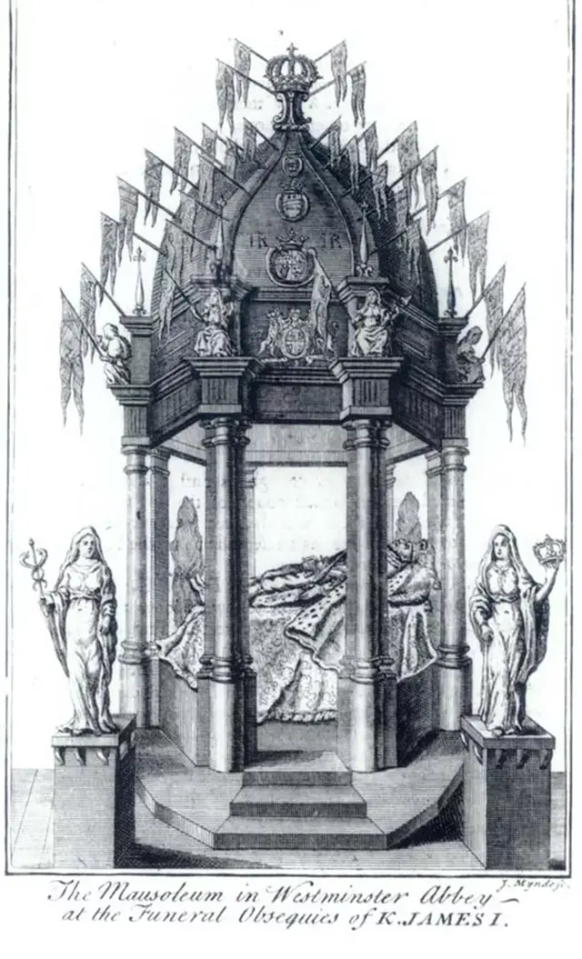
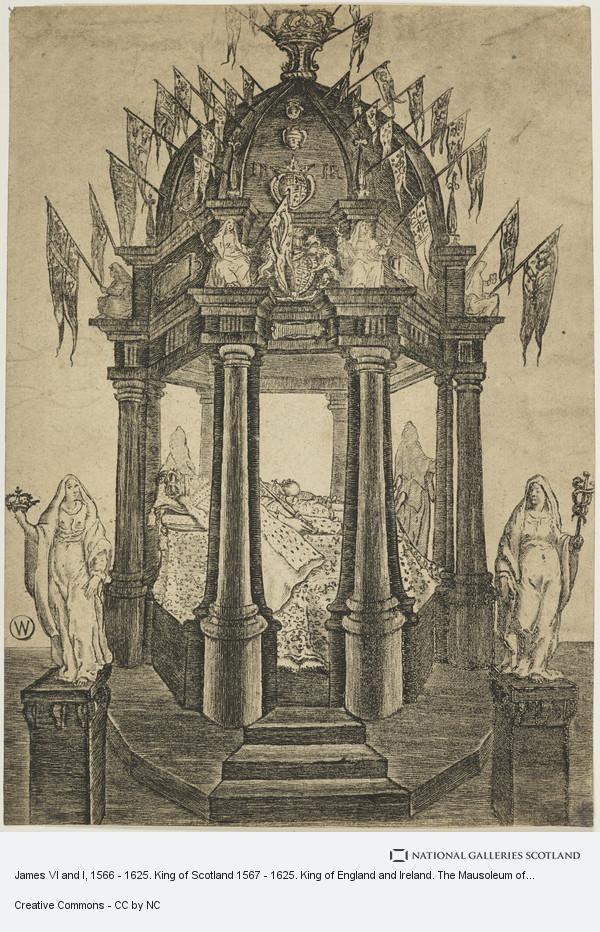
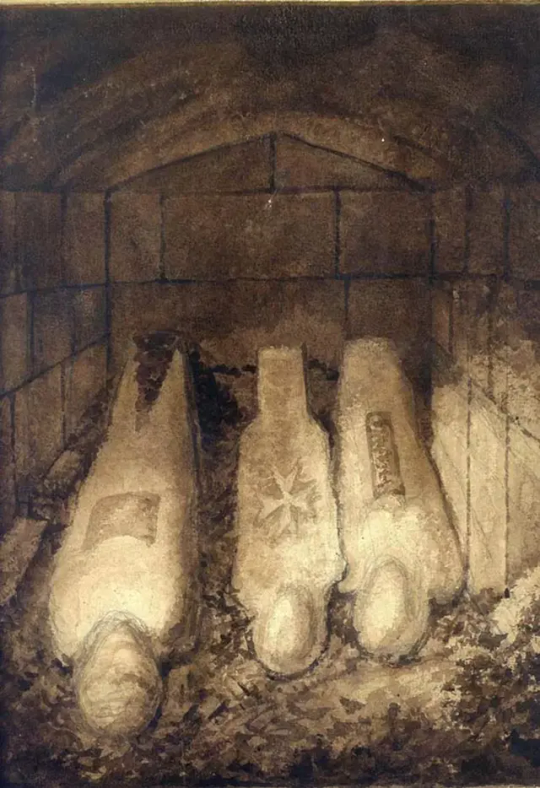
On 27th March 1625, King James VI died.
James Charles Stuart has many facts, myths and urban legends surrounding him, this is just one of them.
Rumours have abounded for centuries that James was a homosexual, I'm not saying he wasn't but at very least you might call him bisexual, he did after all father seven children to his wife, only three of whom survived. Known for writing poetry, there is little doubt he loved his wife, Anne, and wrote many poems and love letters to her throughout their marriage. Most of the rumors of James’ sexual orientation came from Sir Anthony Weldon, who was a bitter enemy of the king, whose writings were published long after James was dead.
One of the most amusing quotes from King James regarding marriage and women was when, at the Hampton Court Conference, the Puritan leaders complained of a line in English wedding vows where the groom says to bride “with my body, I thee worship.” James’ response was “If you had a good wife yourself, you would think all worship and honour you could do her, were well bestowed upon her.”
James supposed lover was George Villiers was a courtier who became a favourite of King James I. The King became infatuated with him and made him Viscount in 1616, Earl in 1617, Marquis in 1618 and Duke of Buckingham in 1623. Outmanoeuvring his rivals the Howards, Villiers was appointed Lord High Admiral in 1619. He manipulated the lovestruck King James to gain unprecedented control over royal patronage, rewarding himself and his family generously. He married his relations into the most important families in England. His own marriage was to Lady Catherine Manners, only daughter of the wealthy Earl of Rutland. Was their friendship more than platonic? To coin a Scottish phrase, "
Mibbes aye mibbes naw."
James had a deep and terrible fear of witchcraft and personally oversaw many witch trials while ruling in Scotland. He saw witchcraft as a branch of theology and even wrote a famous treatise titled Daemonologie, in which he dealt with sorcery, magic, and even vampires and werewolves!
James had a relatively peaceful reign, except for the infamous Gunpowder Plot, and kept taxes low. He was known as both the British Solomon and was called “the wisest fool in Christendom” by the King of France. James was both a brute and a gentleman, a sloth and a scholar, a boor and a poet, paranoid and cunning.
Perhaps we should look at his mother's French Emissary Monsieur de Fontenay who had the following to say regarding the young James’ character and traits:
“I have been well received by the king, who has treated me better in reality than in appearance. He give me much credit, but does not show me much kindness. Since the day of my arrival he has ordered me to live in his house along with the earls and lords, and that I shall have access to him in his cabinet just as the others have… .
To tell you truly what I think of him – I consider him the first prince in the world for his age. … . He apprehends and conceives quickly, he judges ripely and with reason, and he retains much and for a long time. In questioning he is quick and piercing, and solid in his answers. … He is learned in many languages, sciences, and affairs of state. more so than probably anyone in his realm. In a word he has a miraculous wit, and moreover is full of noble glory and a good opinion of himself.
Having been brought up in the midst of constant fears, he is timid and will not venture to contradict the great lords; yet he wishes to be thought brave.
He hates dancing and music in general and especially all the mincing affectations of the court … .
From want of proper instruction his manners are boorish and very rough, as well in his way of speaking, eating. dress, amusements and conversation, even in the company of women.
He is never at rest in one place but takes a singular pleasure in walking; but his gait is very ungainly and his step is wandering and unsteady, even in a room. His voice is thick and very deep as he speaks. … He is weak of body … But to sum up, he is an old young man. …
He misunderstands the real extent of his poverty and weakness; he boasts too much of himself and he despises other princes. In the second place, he disregards the wishes of his subjects; and lastly, he is too idle and careless in business and too much addicted to his own pleasures, chiefly hunting. … He told me that he really gave greater attention to business than he seemed to do for he could get through more work in one hour than others could in a day. …"
James ruled Scotland as James VI from 24th July 1567 and, as you might recall from my post a few days ago, ruled in England, Wales and Ireland as James 1st from 24th March, 1603. He died 27th March, 1625 at Theobalds House, and his remains lie in the Henry VII Lady Chapel in Westminster Abbey.
The third pic shows James's body next to Henry VII and his queen in the vault
15 notes
·
View notes
Text

7/xx Anon. George Villiers with family c1627 Royal Collections Trust
Although his attempts at military campaigning and statesmanship were not a success, George can at least take pride in his role as the founder of a dynasty.
Not included in the painting are George’s half siblings from his father’s first marriage to Audrey Saunders.
In the painting from left to right -
Susan Fielding countess of Denbigh (George’s sister)
Katherine Manners Duchess of Buckingham de jure countess of Rutland and later marchioness of Antrim (George’s meal ticket wife)
Mary Villiers later Duchess of Lennox and Richmond (George’s daughter)
Our boy George
Christopher Villiers earl of Angelsey (George’s brother)
Mary Beaumont de jure countess of Buckingham (George’s mother)
John Villiers viscount Purbeck (George’s brother)
Kneeling in front - Mary fielding Duchess of Hamilton holding George jr the second duke.
In the background there is a picture of his father Sir George Villiers (d 1606)
Despite him and Kate’s son dying without an heir, via his brothers and sisters, the Villiers were able to transform themselves from minor Leicestershire gentry into major aristocratic magnates.
The Villiers clan has produced a number of royal favourites such as the notorious Barbara Villiers Duchess of Cleveland (granddaughter of one of George’s brothers), George jr, Elizabeth Villiers (possible mistress of William iii), Frances Villiers countess of Jersey (mistress of George iv); as well as some more respectable members in the 18 and 19th centuries as politicians, military men and a handful of bishops.
The Villiers family are still the earls of jersey today, with UK conservative MP Theresa Villiers being a descendant of one of George’s brothers, among others.
#george villiers#duke of buckingham#charles i#james i#mary & george#portraits of steenie#steenie#Villiers family
9 notes
·
View notes
Text

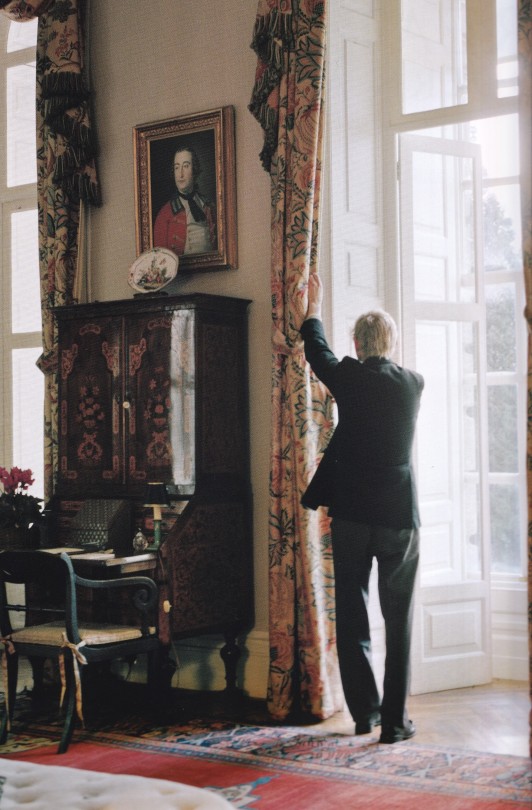
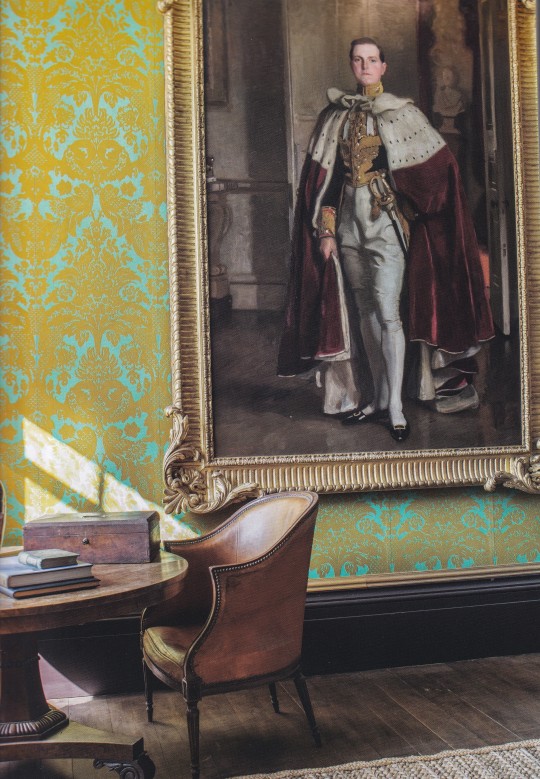


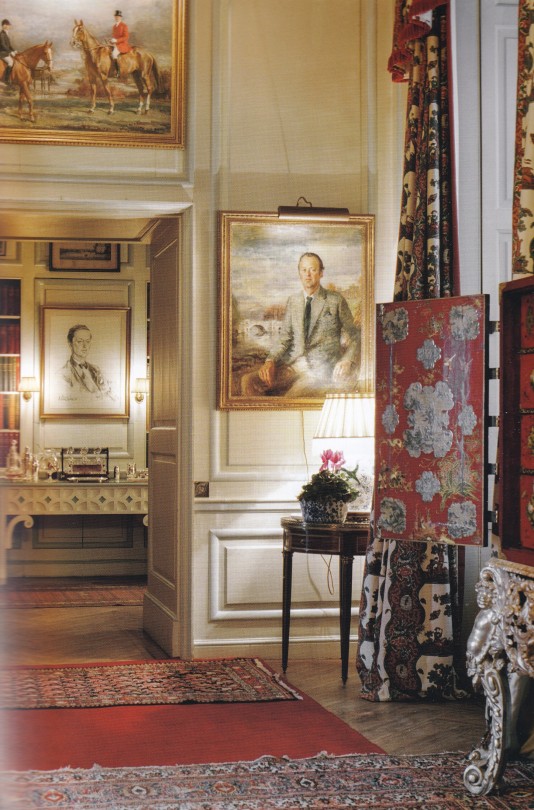
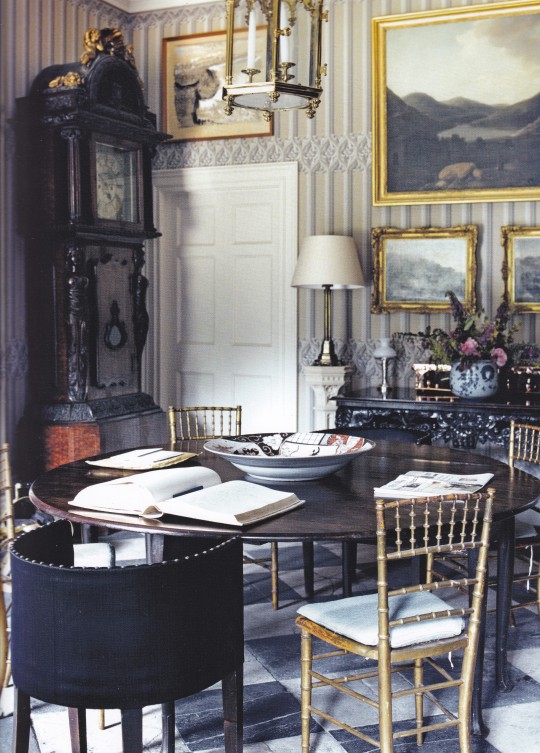
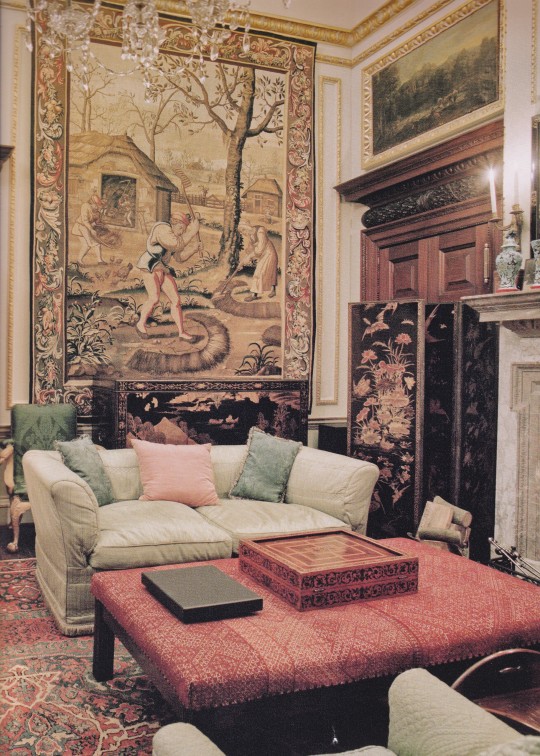

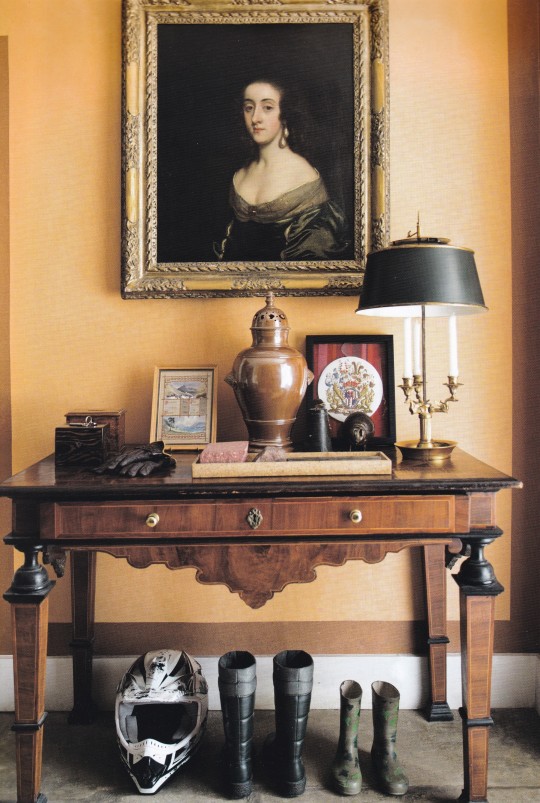
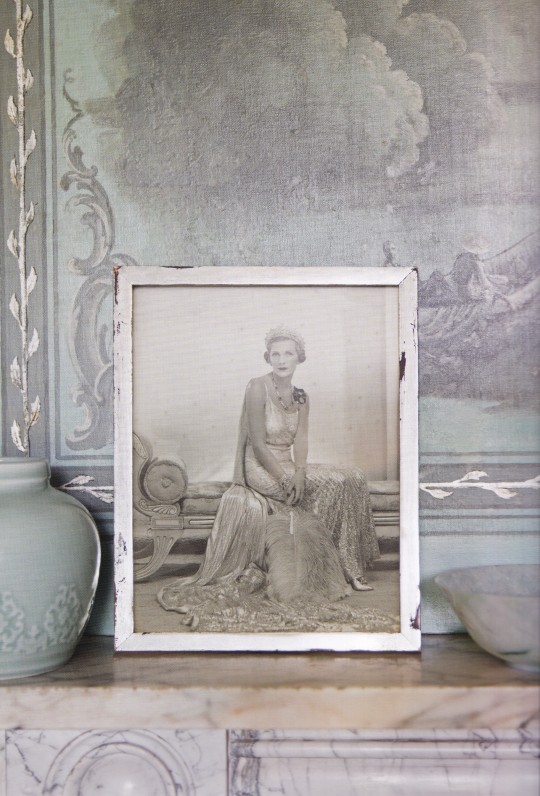
Great Houses Modern Aristocrats
by James Reginato
Photographs by Jonathan Becker, Foreword by Viscount Linley
Rizzoli Int., New York 2016, 256 pages, Hardcover, ISBN 978-0-8478-4898-0
euro 70,00
email if you want to buy [email protected]
This stunning book presents the intriguing stories and celebrated histories of some of the leading families of Great Britain and Ireland and the opulent residences that have defined their heritages. The history of England is inextricably linked with the stories of its leading aristocratic dynasties and the great seats they have occupied for centuries. As the current owners speak of the critical roles their ancestors have played in the nation, they bring history alive. All of these houses have survived great wars, economic upheavals, and, at times, scandal. Filled with stunning photography, this book is a remarkably intimate and lively look inside some of Britain’s stateliest houses, with the modern-day aristocrats who live in them and keep them going in high style. This book presents a tour of some of England’s finest residences, with many of the interiors shown here for the first time. It includes Blenheim Palace—seven acres under one roof, eclipsing the splendor of any of the British royal family’s residences—property of the Dukes of Marlborough; the exquisite Old Vicarage in Derbyshire, last residence of the late Dowager Duchess of Devonshire (née Deborah Mitford); Haddon Hall, a vast crenellated 900-year-old manor house belonging to the Dukes of Rutland that has been called the most romantic house in England; and the island paradises on Mustique and St. Lucia of the 3rd Baron Glenconner. This book is perfect for history buffs and lovers of traditional interior design and English country life.
22/02/24
#Great Houses#Modern Aristocrats#leading english families#finest english residences#traditional interior design#English Country Life#designbooksmilano#fashionbooksmilano
9 notes
·
View notes
Text
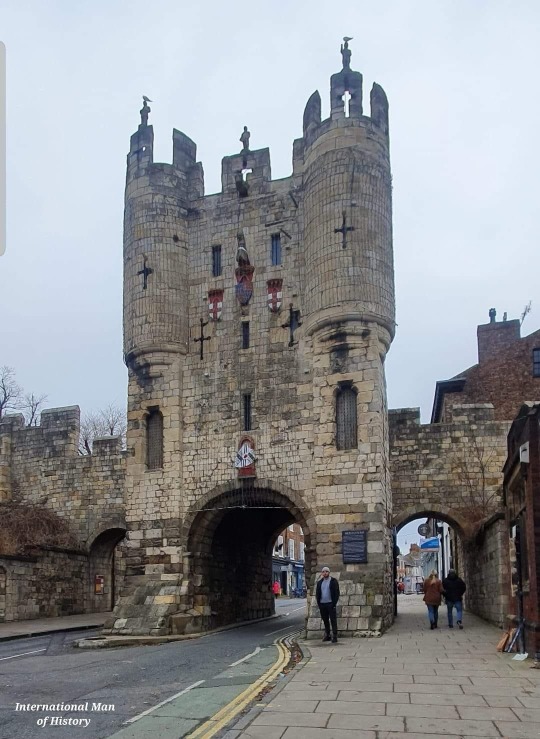
The 12th-century Micklegate Bar in York, England. This was once the main entrance into the old walled city for people coming from the south. It served as a ceremonial entrance for monarchs: King Edward IV, Richard III Henry VII, James I, Charles I, the future James II all entered the city through here.
Often displayed on the gatehouse were the heads and other body parts of enemies. Richard Plantagenet, 3rd Duke of York (father of Edward IV and Richard III), Edmund, Earl of Rutland (another son of Richard) and Richard Neville, 5th Earl of Salisbury, all had their severed heads displayed on this gatehouse.
The lower part of the gatehouse is 12th century, the upper parts date to later centuries.
Source: Facebook
International Man of History
7 notes
·
View notes